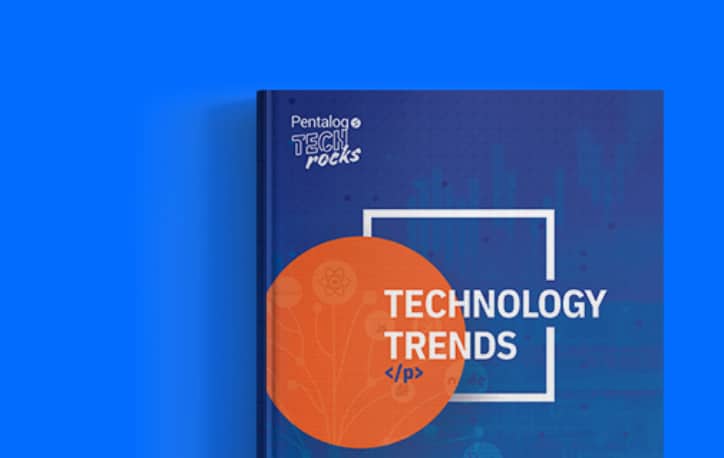Last Updated on November 15, 2024
Imagine investing millions into a cutting-edge data warehouse only to have faulty data corrupt every insight, decision, and action. It happens more often than you’d think. Despite businesses drowning in data – which is expected to exceed 180 zettabytes by 2025 – poor data quality continues to be a challenge for many organizations. In fact, 91% of data professionals agree that poor data quality negatively impacts their organization.
The problem isn’t access to data; it’s the quality of data.
As enterprises strive to harness the power of their data warehouses to become their “single source of truth,” the importance of data cleansing has never been clearer. Without standardized, deduplicated, and clean data, businesses risk facing the “garbage in, garbage out” phenomenon. The question that arises here is what exactly does the data cleansing process entail, and how does it impact the integrity of a data warehouse? Is it truly necessary in your data warehouse design?
Why Do You Need Data Cleansing?
Businesses often encounter records with missing values, misspelled entries, or invalid data when they integrate data from a single source. These issues are ubiquitous in databases and often carry over into analytics reports unless data cleansing and data scrubbing techniques are implemented beforehand.
The challenge intensifies multifold when you’re integrating data from disparate data sources to build centralized data repositories like data warehouses, global information systems, or federated systems of operational databases.
While data inaccuracies are common in single-source integration, integrating disparate data sources introduces additional complications. These include differences in data storage, structure, and representation across each source. There is also the issue of data redundancy or duplicate data, as data from different sources often overlap or exists in multiple formats.
Let’s consider an example for clarity.
Say you have an entity named ‘John Smith’ with City field filled as ‘London’ in one database. Another database has an additional column for ‘Country.’ When these two databases are merged, you won’t have any easy way to fill the ‘City’ field for the former ‘John Smith’ record because there are about 12 different Londons in the world.
This is just one example of the numerous data issues that can arise. Other common challenges include concatenated names in one database and separate columns for FirstName and LastName in another, or an address that is split across multiple columns for HouseNumber and StreetName in one database, and a single combined Address field in another.
One way to correct data quality issues is to manually scan and fix errors, but it quickly becomes impractical as the data grows in size. The more effective solution is to use data quality software built specifically for fast, automated, and accurate data cleansing for your data warehouse.
Implementing Data Cleansing in the Data Warehouse
For your data warehouse to effectively serve as the foundation of your business intelligence efforts, it must be populated with consistent, accurate, and deduplicated data. Clean data is critical to ensuring that downstream analytics applications and other enterprise systems receive the quality inputs they need for reliable insights.
A typical approach to data cleansing involves setting up a separate staging area where data is imported from various sources, transformed, standardized, and cleansed before being moved into the warehouse. Modern data cleansing software enhances this process by supporting in-memory processing. Instead of loading data into a physical database, source data is imported into temporary memory, where cleansing, standardization, and deduplication configurations can be tested. Once the desired results are achieved, the clean data is exported back into the data warehouse.
When deciding upon a data cleansing approach for your data warehouse, ensure that your chosen method can:
- Handle inconsistencies and errors in both single source integrations and multiple source data integrations.
- Minimize hand-coding and manual effort of reviewing data and automate the data validation process as much as possible.
- Be used for sources other than the ones defined initially, so that the approach still applies when you need to add more sources in your data warehouse later.
- Work with schema-based data transformations that rely on metadata and are essential for ensuring that records from multiple data sources undergo standardization consistently.
- Identify linked records across sources for deduplication and enrichment purposes.
- Provide workflow orchestration features to support and create a strong foundation for data quality rules applied at scale to cleanse enterprise data.
By incorporating these features into your data warehouse design, you’ll ensure that your organization operates with a single accurate, and reliable source of truth (quality data) for all data-driven operations.
Data Cleansing in Single Source Integration
As discussed earlier, data cleansing issues in a data warehouse can be categorized into two broad data integration categories due to the unique data cleansing challenges each presents:
- Single source data integration
- Multiple source data integration
For both categories, data cleansing issues can be further broken down into two levels: schema-level and instance-level.
- Schema-related issues are those that can be resolved by improving the design and structure of the database schema.
- Instance-related issues refer to errors that occur a lower (data entry) level in the contents of table fields.
One of the most effective ways to ensure higher data quality is by implementing constraints within your data schemas. Schema constraints control the allowable data values, which significantly reduces the need for data cleansing. Setting more robust and specific constraints reduces the time and effort spent fixing data errors later. Conversely, the fewer constraints your schema has, the greater the effort in data cleansing. One very effective way to do it is to integrate data quality software within your systems and applications and pre-defining business rules based on the constraints you’d like to implement.
Data Ladder’s API-based integration ensures that all input data is checked against your business rules in real-time, regardless of whether data is being entered into your CRM or loaded into an SQL database. This proactive validation reduces the chances of errors during data entry and improves overall data quality.
Examples of Schema-Level Data Quality Issues
Here’s an example to help you understand schema-related data quality issues:
Data:
Birthdate = 20.15.90
Problem:
Non-permissible values
Reason:
The entered value includes a non-existent 15th month, which is outside the valid range for a date.
Other schema-related examples could include:
- Referential integrity issues, where a field refers to a specific department ID but that department ID hasn’t been defined in the system.
- Uniqueness violations, where the system lists the same social security number for two different employees.
Examples of Instance-Level Data Quality Issues
Instance-level issues arise from errors in individual data entries, such as:
- Misspellings: For example, “Coloradoo” instead of “Colorado.”
- Abbreviations used mistakenly during data entry: Such as using “DB prog” as profession instead of “Database Programmer.”,
- Incorrect references: For example, an employee’s record showing deptID as “22” when their actual deptID is 12.
As is clear, if you don’t fix these issues, queries using this data will return incorrect information, causing reports to provide faulty insights. Ultimately, this could result in misguided business decisions based on bad data.
Data Cleansing in Multiple Source Integration
Naturally, data quality issues increase manifold when you’re integrating data into your data warehouse from multiple sources. In addition to the general issues like misspellings and incorrect references in data entry, you must reconcile data across multiple representations and build ‘master’ records for your of vision of ‘Single Source of Truth’ to become reality. You also must deal with data redundancy issues, where data overlaps across systems.
With respect to schema design, mainly you will need to deal with structural and naming conflicts in different source systems. Structural conflicts could include different data types, integrity constraints, component structure, etc. In terms of instance-related issues, multiple sources will probably mean that the same attribute is represented differently in different systems. For example: MaritalStatus could be “Married” or “Single” in one system, while another could have a record for RelationshipStatus with different attributes altogether – but showing marital status too.
Data duplication is another very important issue here, particularly when you have multiple records in multiple systems that point to the same entity. Businesses have millions of records related to customers, vendors, and employees, often in different databases. These databases have many duplicate records, which results in decreased operational efficiency as well as missing data values. Multiple data records mean details of the same customer/entity are spread to multiple records. Deleting duplicates and merging the records increases the efficiency of the database while creating a single source of truth with accurate, reliable information and no irrelevant data values.
Customer Table (ABC Source System):
| CID | Name | Street | City | Sex |
| 11 | Kristen Smith | 2 Hurley Pl | South Fork, MN 48503 | 0 |
| 24 | Christian Smith | Hurley St 2 | S Fork MN | 1 |
Client Table (XYZ Source System):
| Cno | Last Name | First Name | Gender | Address | Phone/Fax |
| 11 | Smith | Christoph | M | 23 Harley St, Chicago IL, 60633-2394 | 333-222-6542 / 333-222-6599 |
| 493 | Smith | Kris L. | F | 2 Hurley Place, South Fork MN, 48503-5998 | 444-555-6666 |
Customers Table (Integrated after data cleansing for target data warehouse):
| No | LName | FName | Gender | Street | City | State | ZIP | Phone | Fax | CID | Cno |
| 1 | Smith | Kristen L. | F | 2 Hurley Place | South Fork | MN | 48503-5998 | 444-555-6666 | 11 | 493 | |
| 2 | Smith | Christian | M | 2 Hurley Place | South Fork | MN | 48503-5998 | 24 | |||
| 3 | Smith | Christoph | M | 23 Harley Street | Chicago | IL | 60633-2394 | 333-222-6542 | 333-222-6599 | 11 |
Integrating data into your data warehouse revolves around two important processes:
- Recognizing whether the same entity exists in both sources
- Combining entity data to obtain a consolidated view of an entity table
To get a clean, complete view, you must merge related data while purging redundant duplicates, as shown in the example above. The process is commonly known as ‘merge purge’ – the process of combining data from two or more sources, identifying and/or combining duplicates, and eliminating (purging) unwanted records.
To use your data warehouse to its fullest potential, merge purge is critical. Data can be analyzed to find insights, increase efficiency, and discover problems when you are designing your data warehouse to be the ‘single source of truth’ across the enterprise. Merge purge allows you to choose how the data should be merged and purged. Pick the data survivorship rules that serve your purpose best and our merge purge tool will go through millions of records, combining them into complete golden records. It preserves your original data in its original form and creates a new dataset that contains all the information.
Build Reliable and Accurate Analytics Capabilities into Your Data Warehouse
Data Ladder’s data quality software has been rated the fastest and most accurate platform for record linkage across multiple independent studies. Leverage our powerful, proprietary matching capabilities to detect and purge duplicates, or merge and survive data to build a ‘single source of truth’ using world-class fuzzy matching, intelligent parsing, and pattern recognition techniques.
“My favorite part of DataMatch is how easy and flexible it is to use. I can use data from virtually any data source including ODBC connections, CSV files, and JSON files. It does a great job with data cleansing making the matching process even more powerful.”
Nick Corder, Platform Architect
The unrivaled speed, accuracy and low cost of DataMatch Enterprise make matching and linking records from all your data repositories a breeze, thanks to the wide variety of integrations that DataMatch Enterprise provides out-of-the-box.
Enhance your cleansing strategy and improve the data cleansing process for the warehouse by leveraging our native integration with the numerous data sources and advanced record linkage features to find data matches across all supported repositories, regardless of whether your data lives in social media platforms and legacy systems or traditional databases and flat files and even Big Data lakes. Data Ladder integrates with virtually all modern systems to help you get the most out of your data warehouse.
Get in touch with our solution architects to work out a plan to scrub, clean, and finally validate data using advanced automation techniques while building your data warehouse and ensure your business users get accurate analytics.



































